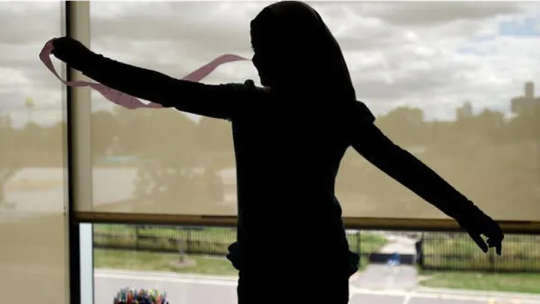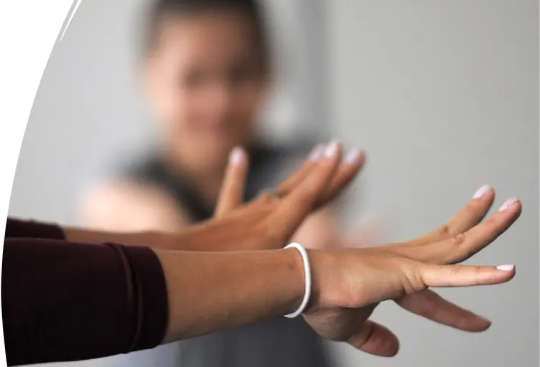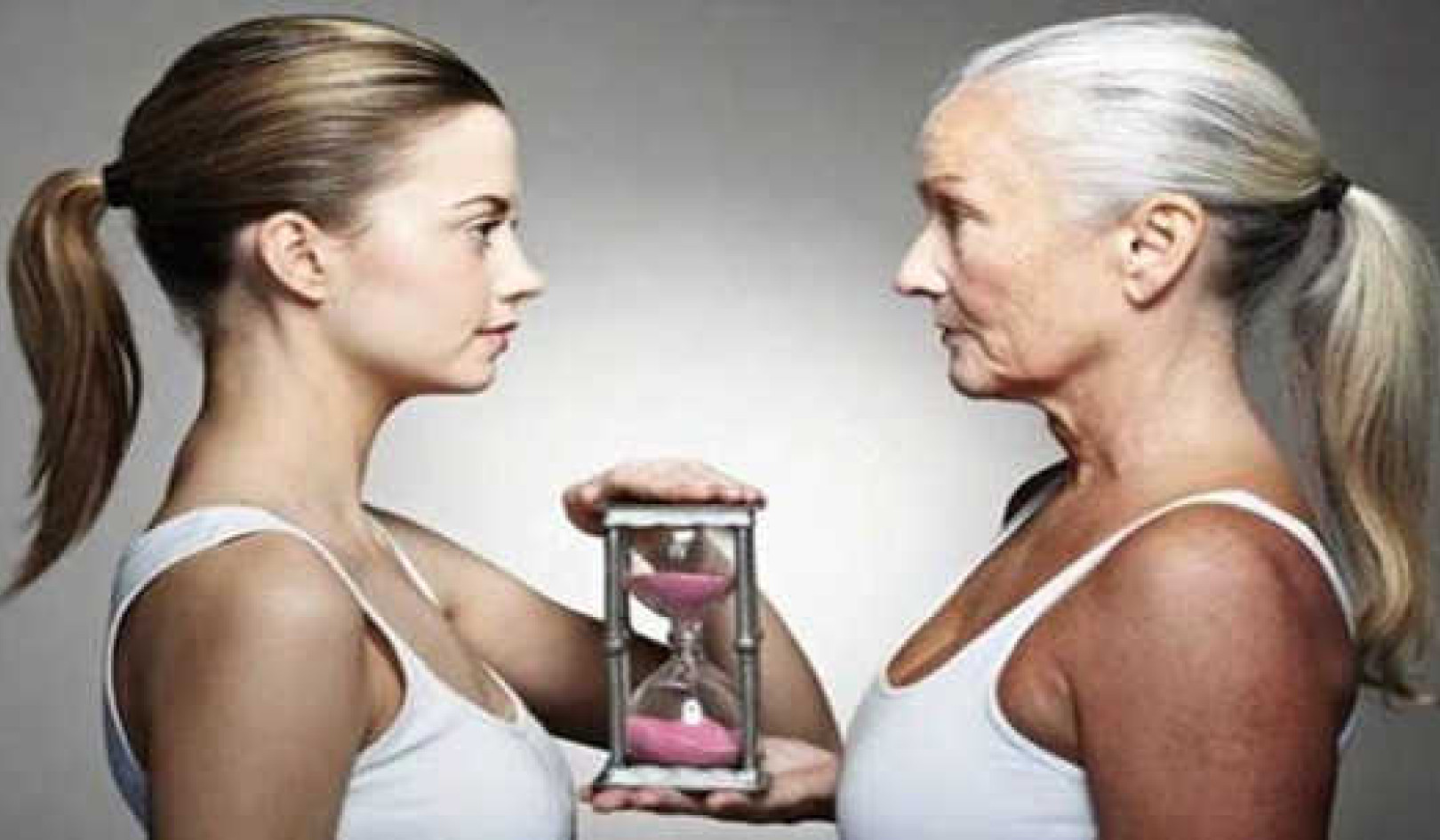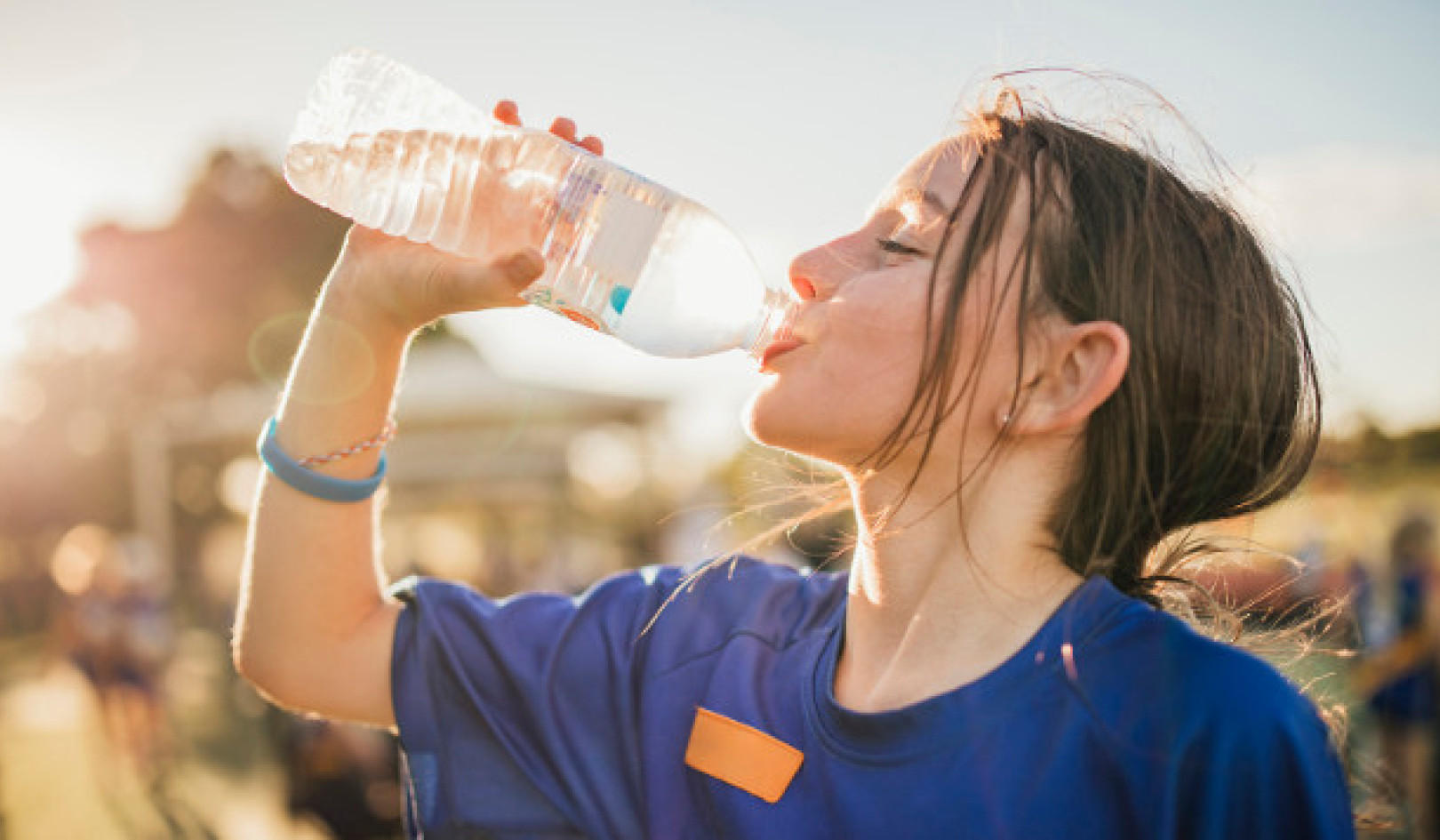
Dance and movement therapy not only holds promise for treatment of trauma, anxiety and depression but can also contribute lifelong coping skills. kate_sept2004/E+ via Getty Images
A few years ago, framed by the skyline of Detroit, a group of about 15 children resettled as refugees from the Middle East and Africa leapt and twirled around, waving blue, pink and white streamers through the air.
The captivating scene was powerfully symbolic. Each streamer held a negative thought, feeling or memory that the children had written down on the streamers. On cue and in unison, the children released their streamers into the air, then sat down nearby. Then they gathered up the fallen streamers, which carried their collective struggles and hardships, threw them in a trash can and waved goodbye.
The children were participating in a dance therapy activity as part of our team’s research program exploring body-based approaches to mental health treatment in people resettled as refugees.
In 2017, our lab – the Stress, Trauma and Anxiety Research Clinic – began piloting movement therapies to help address trauma in refugee families. We are learning that movement may not only provide a way to express oneself, but also offer a path toward healing and lifelong strategies for managing stress.

Dance and movement therapy offers a self-empowering mind-body approach to mental health treatment. David Dalton, CC BY-ND
On average, every year about 60,000 children are resettled as refugees in Western nations. Now, the refugee crisis resulting from the U.S. withdrawal from Afghanistan is bringing renewed attention to their needs. The UN Refugee Agency estimates that 6 million Afghans have been displaced over the past 40 years, and a new wave of tens of thousands are now fleeing from Taliban rule.
I am a neuroscientist who specializes in understanding how trauma reshapes the nervous system of developing youth. I use this information to explore creative arts and movement-based therapies to treat stress and anxiety. The instinct to move the body in expressive ways is as old as humanity. But movement-based strategies such as dance therapy have only recently been given much attention in mental health treatment circles.
As a dancer myself, I always found the nonverbal emotional expression offered through movement to be incredibly therapeutic – especially when I was experiencing significant anxiety and depression in high school and college. Now, through my neuroscience research, I am joining a growing number of scholars working to bolster the evidence base supporting movement-based interventions.
One mind and body
During the COVID-19 pandemic, the incidence of anxiety and depression doubled in youth. As a result, many people are searching for new ways to cope with and handle emotional turmoil.
On top of the pandemic, conflicts around the world, as well as climate change and natural disasters, have contributed to the growing global refugee crisis. This demands resources for resettlement, education and occupation, physical health and – importantly – mental health.
Interventions that offer physical activity and creativity components, at a time when children and people of all ages are likely to be sedentary and with reduced environmental enrichment, can be beneficial during the pandemic and beyond. Creative arts and movement-based interventions may be well-suited to address not just the emotional but also the physical aspects of mental illness, such as pain and fatigue. These factors often contribute to the significant distress and dysfunction that drive individuals to seek care.

With outstretched arms, neuroscientist Lana Ruvolo Grasser performs a tension-and-release exercise with her study participants. David Dalton, CC BY-ND
Why dance and movement therapy?
Body movement in and of itself is known to have a multitude of benefits – including reducing perceived stress, lowering inflammation in the body and even promoting brain health. In fact, researchers understand that the majority of our daily communication is nonverbal, and traumatic memories are encoded, or stored, in nonverbal parts of the brain. We also know that stress and trauma live in the body. So it makes sense that, through guided practices, movement can be leveraged to tell stories, embody and release emotions and help people “move” forward.
Dance and movement therapy sessions place an emphasis on fostering creativity and adaptability in order to help people develop greater cognitive flexibility, self-regulation and self-direction. This is especially important because research shows that early-life experiences and how children learn to cope with them can have a lasting impact on their health into adulthood.
According to the Child Mind Institute Children’s Mental Health Report, 80% of children with anxiety disorders are not receiving the treatment they require. This might be due to barriers such as clinician availability and cultural literacy, cost and accessibility, and stigma surrounding mental health conditions and treatment.
We are finding that dance and movement therapy and other group behavioral health programs can help fill important gaps. For instance, these strategies can be used in combination with services people are already receiving. And they can provide an accessible and affordable option in school and community settings. Dance and movement therapy can also instill coping skills and relaxation techniques that, once learned, can last a lifetime.
But does it work?
Our research and that of others are showing that dance and movement therapy can build up children’s sense of self-worth, improve their ability to regulate their emotions and reactions and empower them to overcome obstacles.
Much like yoga and meditation, dance and movement therapy has, at the root of its practice, a focus on deep breathing through the diaphragm. This intentional breathing movement physically pushes on and activates the vagus nerve, which is a large nerve that coordinates a number of biological processes in the body. When I work with kids, I call this form of breathing and nerve activation their “superpower.” Whenever they need to calm down, they can take a deep breath, and by engaging their vagus nerve, they can bring their bodies to a more restful and less reactive state.
An analysis of 23 clinical research studies indicated that dance and movement therapy may be an effective and appropriate method for child, adult and elderly patients experiencing a wide array of symptoms – including psychiatric patients and those with developmental disorders. And for both healthy individuals and patients, the authors concluded that dance and movement therapy was most effective for reducing the severity of anxiety compared with other symptoms. Research from our team has also shown promise for the benefits of dance and movement therapy in reducing symptoms of post-traumatic stress disorder and anxiety in youth who resettle as refugees.
We have scaled up these programs and brought them into the virtual classroom for six schools throughout the metro Detroit region during the pandemic.
Perhaps the most promising evidence for dance and movement therapy isn’t, as the saying goes, what the eyes cannot see. In this case, it is what the eyes can see: children releasing their streamers, their negative emotions and memories, waving goodbye to them and looking ahead to a new day.![]()
About The Author
 Lana Ruvolo Grasser is a 5th year doctoral candidate (2021) at Wayne State University. She is a member of the Stress, Trauma, and Anxiety Research Clinic as well as the Jovanovic Lab, and she is co-mentored by Drs. Arash Javanbakht and Tanja Jovanovic. Her NIMH-funded dissertation project, “Biomarkers of Risk and Resilience to Trauma in Syrian Refugee Youth”, seeks to identify possible biological indicators of trauma-related psychopathology in youth exposed to civilian war trauma and forced migration. You can follow her professional works and personal adventures on Twitter, @ScientificRuvvy.
Lana Ruvolo Grasser is a 5th year doctoral candidate (2021) at Wayne State University. She is a member of the Stress, Trauma, and Anxiety Research Clinic as well as the Jovanovic Lab, and she is co-mentored by Drs. Arash Javanbakht and Tanja Jovanovic. Her NIMH-funded dissertation project, “Biomarkers of Risk and Resilience to Trauma in Syrian Refugee Youth”, seeks to identify possible biological indicators of trauma-related psychopathology in youth exposed to civilian war trauma and forced migration. You can follow her professional works and personal adventures on Twitter, @ScientificRuvvy.
Books on Improving Performance from Amazon's Best Sellers list
"Peak: Secrets from the New Science of Expertise"
by Anders Ericsson and Robert Pool
In this book, the authors draw on their research in the field of expertise to provide insights into how anyone can improve their performance in any area of life. The book offers practical strategies for developing skills and achieving mastery, with a focus on deliberate practice and feedback.
Click for more info or to order
"Atomic Habits: An Easy & Proven Way to Build Good Habits & Break Bad Ones"
by James Clear
This book offers practical strategies for building good habits and breaking bad ones, with a focus on small changes that can lead to big results. The book draws on scientific research and real-world examples to provide actionable advice for anyone looking to improve their habits and achieve success.
Click for more info or to order
"Mindset: The New Psychology of Success"
by Carol S. Dweck
In this book, Carol Dweck explores the concept of mindset and how it can impact our performance and success in life. The book offers insights into the difference between a fixed mindset and a growth mindset, and provides practical strategies for developing a growth mindset and achieving greater success.
Click for more info or to order
"The Power of Habit: Why We Do What We Do in Life and Business"
by Charles Duhigg
In this book, Charles Duhigg explores the science behind habit formation and how it can be used to improve our performance in all areas of life. The book offers practical strategies for developing good habits, breaking bad ones, and creating lasting change.
Click for more info or to order
"Smarter Faster Better: The Secrets of Being Productive in Life and Business"
by Charles Duhigg
In this book, Charles Duhigg explores the science of productivity and how it can be used to improve our performance in all areas of life. The book draws on real-world examples and research to provide practical advice for achieving greater productivity and success.
Click for more info or to order
This article is republished from The Conversation under a Creative Commons license. Read the original article.
























